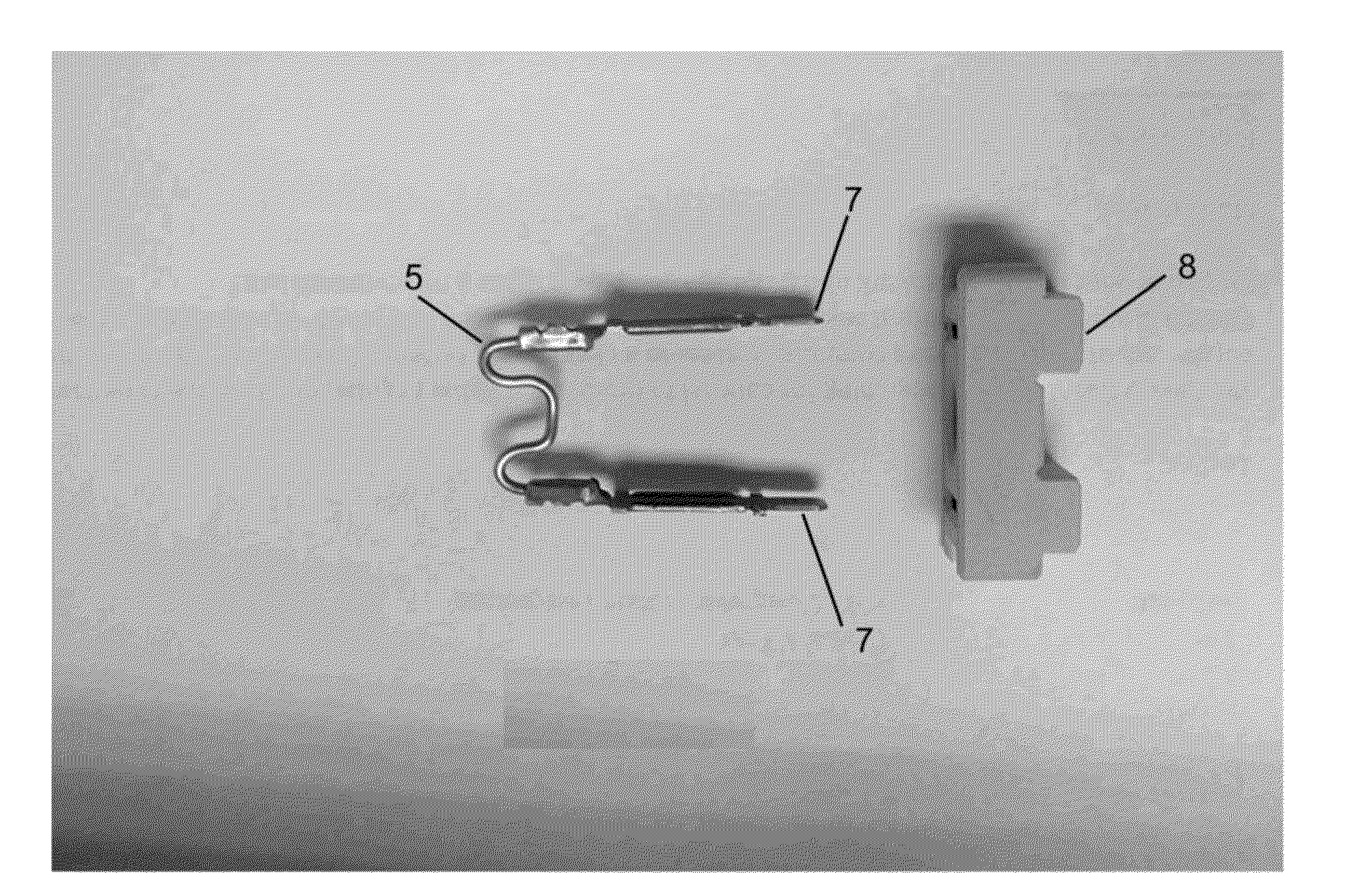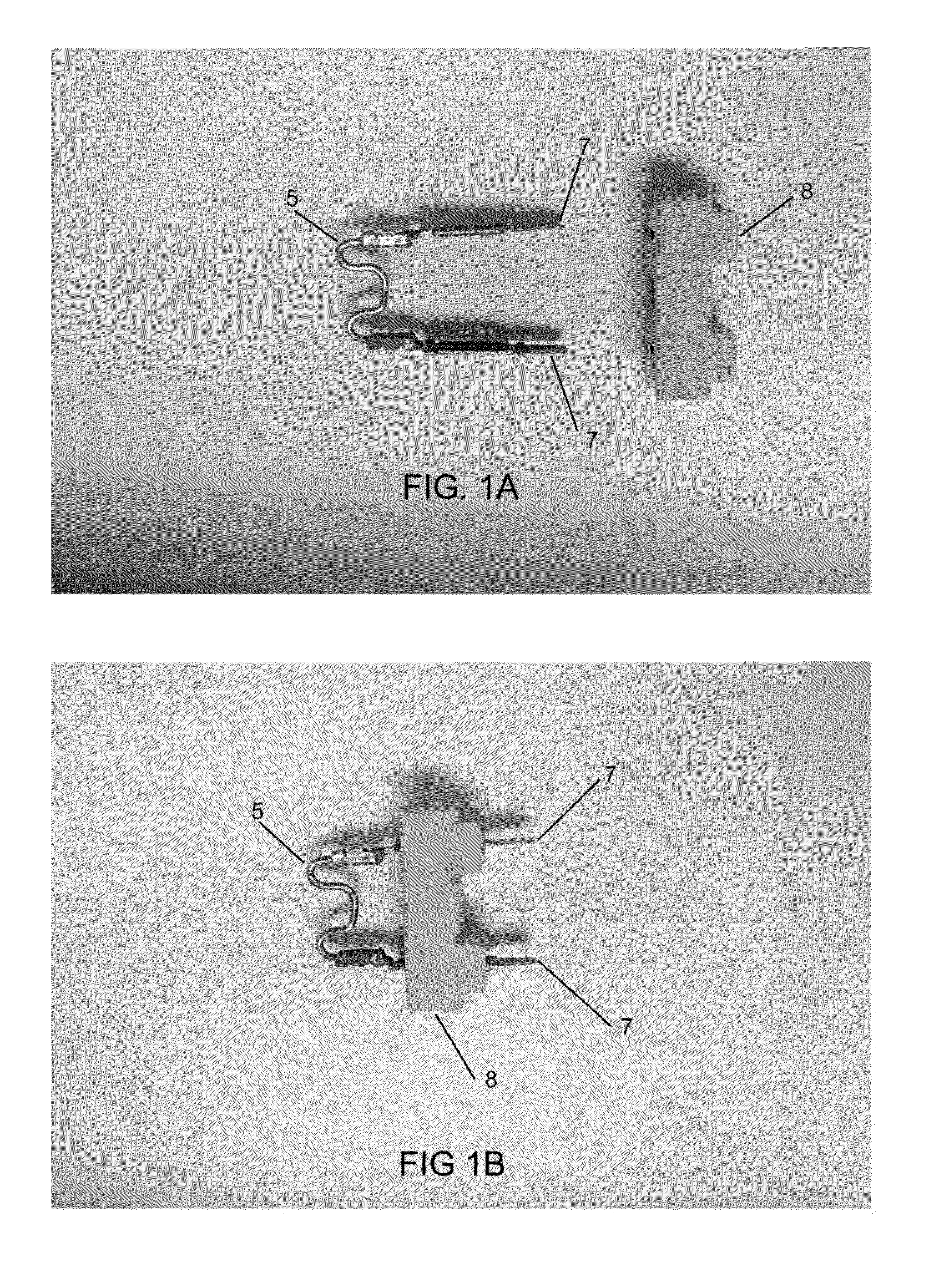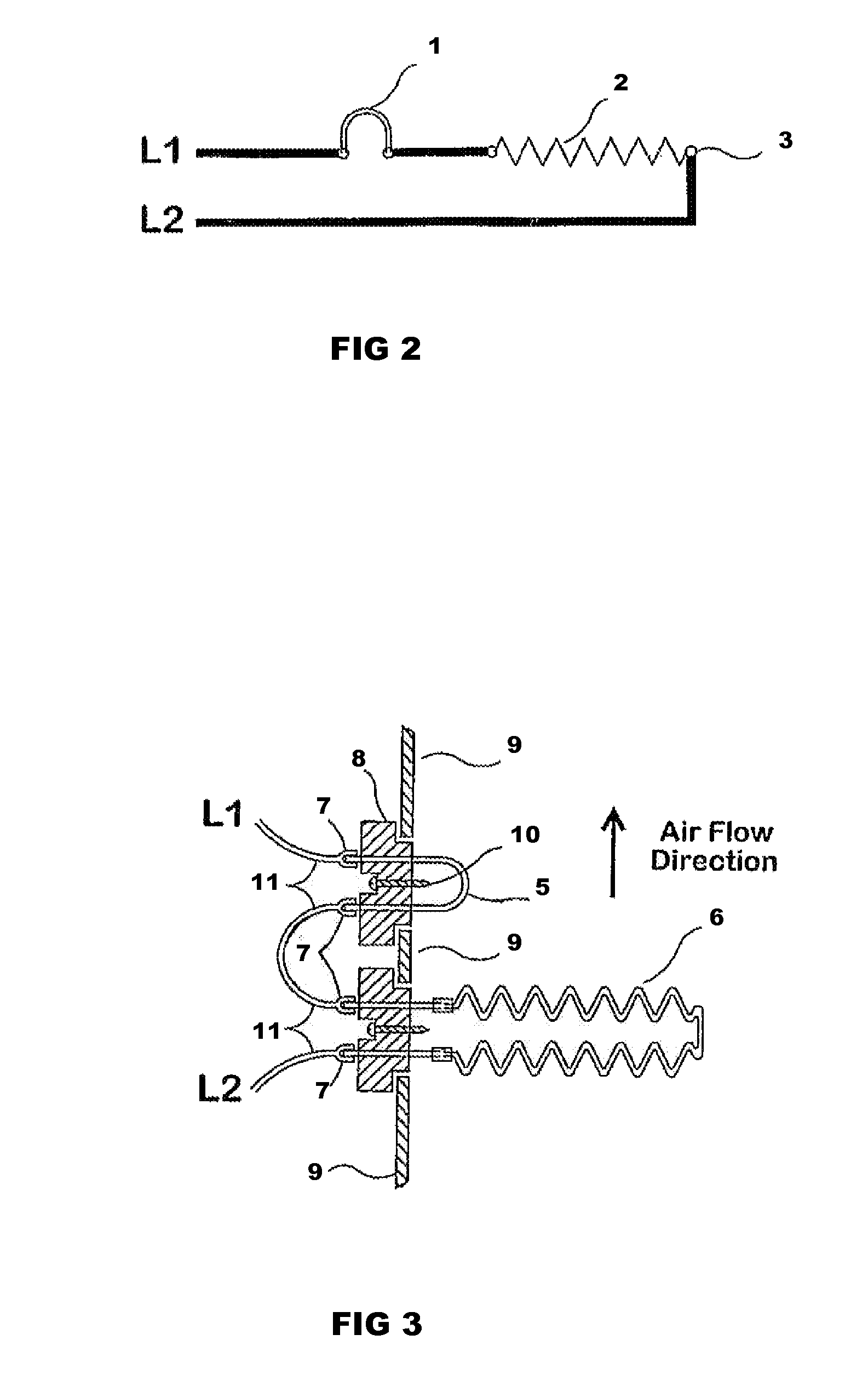Thermal cutoff link safety fuse in HVAC system
a safety fuse and cutoff link technology, applied in the direction of thermally actuated switches, electric switches, electrical apparatus, etc., can solve the problems of failure of devices to open, failure of traditional electrical devices employed in hvac systems to fail in “closed” mode, and the majority of overheating protection devices used in hvac systems are not fail-safe mechanisms, so as to prevent the continued heating of airflow, reduce or eliminate the risk of fire, and the effect of preventing the continued heating o
- Summary
- Abstract
- Description
- Claims
- Application Information
AI Technical Summary
Benefits of technology
Problems solved by technology
Method used
Image
Examples
Embodiment Construction
[0028]While the present invention will be described more fully hereinafter with reference to the accompanying drawings, in which one or more embodiments of the present invention is shown, it is to be understood at the outset of the description which follows that persons of skill in the appropriate arts may modify the invention herein described while still achieving the favorable results of this invention. Accordingly, the description which follows is to be understood as being a broad, teaching disclosure directed to persons of skill in the appropriate arts, and not as limiting upon the present invention.
[0029]The current invention satisfies the needs in the industry by providing a thermal cut off link safety fuse for use in HVAC systems. The thermal cut off link safety fuse is comprised of a terminal block, two double-sided electrical terminals mounted on the terminal block, and a length of conductive heat-sensitive fuse element which is electrically connected to one side of each of...
PUM
 Login to View More
Login to View More Abstract
Description
Claims
Application Information
 Login to View More
Login to View More - R&D
- Intellectual Property
- Life Sciences
- Materials
- Tech Scout
- Unparalleled Data Quality
- Higher Quality Content
- 60% Fewer Hallucinations
Browse by: Latest US Patents, China's latest patents, Technical Efficacy Thesaurus, Application Domain, Technology Topic, Popular Technical Reports.
© 2025 PatSnap. All rights reserved.Legal|Privacy policy|Modern Slavery Act Transparency Statement|Sitemap|About US| Contact US: help@patsnap.com



